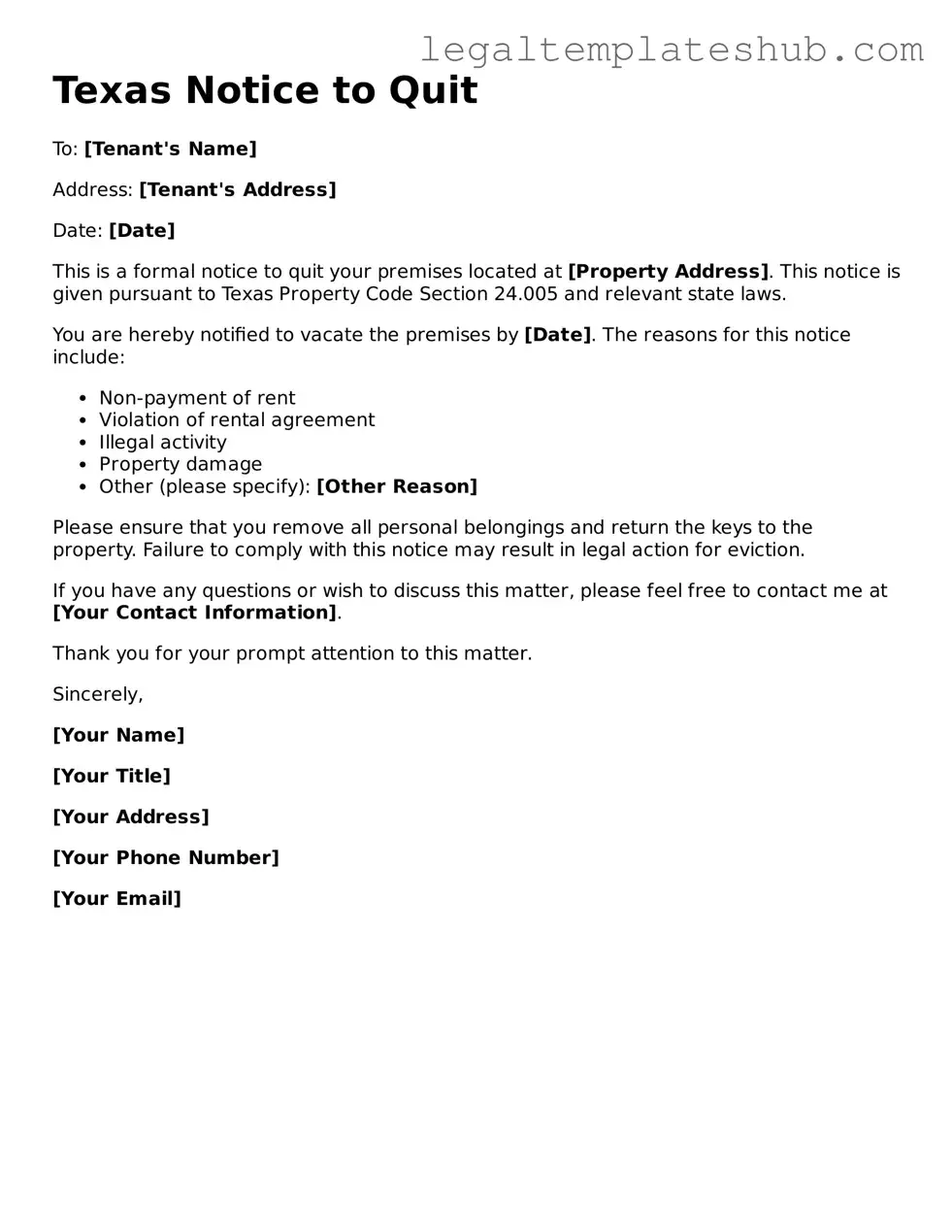- Misconception 1: The Notice to Quit is the same as an eviction notice.
While both documents relate to the termination of a lease, a Notice to Quit is a preliminary step. It informs the tenant that they must vacate the property, whereas an eviction notice is a formal legal action initiated by the landlord.
- Misconception 2: Tenants do not need to respond to a Notice to Quit.
Receiving a Notice to Quit does not mean tenants can ignore it. They have the right to respond, negotiate, or resolve any issues before the situation escalates to eviction proceedings.
- Misconception 3: A Notice to Quit can be issued for any reason.
Landlords must have valid grounds to issue a Notice to Quit. Common reasons include non-payment of rent or violation of lease terms. Personal reasons or arbitrary decisions are not acceptable grounds.
- Misconception 4: A Notice to Quit can be delivered in any manner.
There are specific legal requirements for how a Notice to Quit must be delivered. Common methods include personal delivery, certified mail, or posting on the property. Failure to follow these procedures may invalidate the notice.
- Misconception 5: Tenants have no rights once they receive a Notice to Quit.
Tenants retain their rights even after receiving a Notice to Quit. They can contest the notice in court, seek legal advice, or negotiate with the landlord to find a resolution.
- Misconception 6: The Notice to Quit must be a formal legal document.
While a Notice to Quit should be clear and written, it does not need to follow a specific legal format. However, it must contain essential information, such as the reason for termination and the deadline for vacating.
- Misconception 7: A Notice to Quit guarantees eviction.
A Notice to Quit is merely a notification and does not guarantee that eviction will occur. If the tenant resolves the issue or disputes the notice, the landlord may not proceed with eviction.
- Misconception 8: Landlords can issue a Notice to Quit without warning.
Landlords are generally required to provide notice before taking further action. This notice allows tenants time to address any issues, such as unpaid rent, before eviction proceedings begin.
